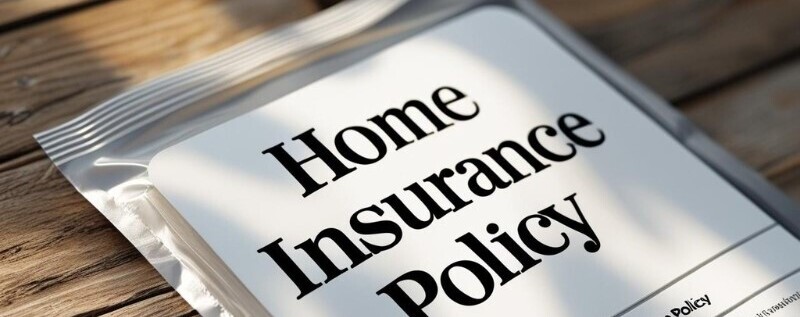Table of Contents

Home insurance. It sounds pretty straightforward, right? But dig a little deeper, and you’ll find it’s more than just a piece of paper shielding your four walls. It’s about financial security and, perhaps even more importantly, peace of mind. Knowing that your safe haven is protected against unexpected events makes all the difference when life’s uncertainties crop up.
We’ve all seen the news—natural disasters getting fiercer and more frequent. And let’s be real, looting isn’t just a relic of dystopian films. It’s a truth some neighborhoods face, especially in widespread emergencies. This is why having adequate home insurance isn’t just a ‘nice-to-have’ anymore. It’s becoming an absolute must.
While some folks believe their basic policy will cover almost any eventuality, that’s not always the case. There are many misconceptions floating around about what a standard home insurance policy covers, particularly when it comes to looting and natural disasters. For peace of mind, it’s crucial to grasp exactly what your policy includes, and more importantly, what it doesn’t.
Curious about the real risks? The numbers speak for themselves: there’s been a significant uptick in both natural disasters and incidents of looting over the past few years. Knowing these stats might push someone from a ‘maybe I should’ towards ‘I definitely need to beef up my home insurance coverage.’ It’s not just about covering expenses—it’s ensuring that you, and those you love, aren’t left financially bereft.
And let’s not forget the emotional comfort that comprehensive insurance brings. It’s one thing to worry about the physical safety of your home and possessions; it’s another to feel vulnerable because of a lack of financial backup. With the right coverage, you can sleep a little easier, knowing you’re prepared no matter what curveballs life throws your way.
Tailoring Your Policy: Customizing Coverage for Looting Risks

When it comes to home insurance, one size definitely doesn’t fit all. Standard policies might seem comprehensive at a glance, but they often fall short when we scrutinize specific risks like looting. To truly safeguard what matters, customization is key.
Understanding what your existing policy covers is the first step. Generally, basic plans cover theft, but looting during chaotic times might fall into a gray area. This is where endorsements, or additional coverages, become crucial. They can specifically target losses due to looting, breaking through that murky barrier.
An effective way to start is by assessing the value of your personal possessions. Whether it’s electronics, jewelry, or those priceless family heirlooms, an accurate valuation ensures your insurance truly reflects your needs. Documenting this accurately not only backs up your claims but also speeds up processing in times of need.
Crime rates differ vastly across areas, making it essential to consider local crime statistics when tailoring coverage. If an area is notorious for break-ins or unrest during emergencies, it might be wise to have a conversation with your insurer about increasing coverage related to looting.
Transparency is crucial. When assessing the worth of what you own are honest mistakes. Inflate values, and premiums might skyrocket unnecessarily. Underestimate, and you might fall short when it matters most. A detailed and honest assessment will keep your premiums balanced and your coverage comprehensive.
Safeguarding Against Nature: Disaster Coverage Optimization

Natural disasters don’t usually send a warning before they strike, making it all the more important to have solid coverage. But not all disasters are created equal in the eyes of insurance. Some perils, like floods and earthquakes, are considered separate from standard policies. This means a basic policy isn’t enough if you’re in a region prone to such occurrences.
There’s a lot to think about when securing optimal disaster coverage. Begin by understanding the different types of disasters that could impact your area. Tornadoes, hurricanes, floods—each demands specific considerations. If you’re in earthquake country, for example, it’s smart to secure earthquake insurance, as many policies won’t cover the shifting ground.
Geographical factors play a huge role in coverage decisions. Live by the coast? Coverage for hurricanes is crucial. In a floodplain? Flood insurance is a non-negotiable. Knowing your risk levels helps in adjusting and customizing policies to fit your unique situation.
It’s also wise to update your policy as the environment changes. As new buildings pop up or local climates shift, the risks to your home change too. Some insurance companies may revise policies based on newly apparent dangers, so keeping in touch with your provider keeps your coverage relevant.
As climate change continues to alter weather patterns, the risk of natural disasters grows. Insurance companies are responding by adjusting premiums and terms, so staying informed is your best defense. Keeping abreast of these changes not only helps you choose coverage that fits but can also tip you off to practices that better protect what you hold dear.
Enhancing Protection Through Preventive Measures

Home insurance is essentially a safety net, but there’s a lot you can do beyond the policy itself to protect your home. Investing in good security systems is a prime example. They not only act as deterrents but can also reduce your premiums significantly. Insurers often provide discounts for homes equipped with alarms, cameras, and other advanced security features.
Community efforts also play a key role in lowering risks and, subsequently, insurance costs. Neighborhood watch programs, for example, increase vigilance, making neighborhoods safer and potentially lessening the need for high premiums. Join forces with neighbors to create a safer environment.
Insurers offer various discounts and advice on loss prevention, which many people overlook. This advice includes everything from simple home maintenance to more sophisticated tech upgrades, all geared towards minimizing risks. Embracing these tips can lead to long-term financial benefits, keeping both your property and wallet safe.
Technology is an ally in keeping your home secure. Smart home devices, like automated lights and remote surveillance, can be integrated with systems to provide extra layers of security. They deter break-ins while giving you control from anywhere, adding another safeguard beyond traditional coverage.
Partnering with local authorities and using public resources helps reinforce protection. Municipalities offer various programs and resources dedicated to community safety. Leveraging these can enhance personal safety strategies. Combined efforts make it tougher for threats to go unnoticed and unchallenged.

Finding the right home insurance policy means more than just glancing at price tags. It’s about understanding the balance between cost and coverage. With so many providers offering varied policies, taking the time to compare quotes makes a big difference.
Each policy comes with its own set of terms, including how claims are processed. This impacts your experience significantly when you need to file a claim. It’s wise to assess this before committing to a provider. A fast and fair claims process is worth its weight in gold during stressful times.
Working with a trusted insurance agent can personalize your insurance shopping journey. They offer insights into what’s necessary for your situation and might uncover discounts you weren’t aware of. A good agent listens, understands, and guides without pushing you into unnecessary extras.
Customer reviews and ratings are an indispensable resource. They provide real-world feedback on insurers’ reliability and client satisfaction. While one might not base their entire decision on reviews, they certainly help paint a fuller picture of potential experiences.
Keeping an eye on the legal and regulatory landscape is another must-do. Insurance rules can vary widely by region and knowing these helps you understand required coverages and potential benefits. Legislation can also dictate certain policy provisions, so staying informed makes sure you’re covered in all the right ways.
